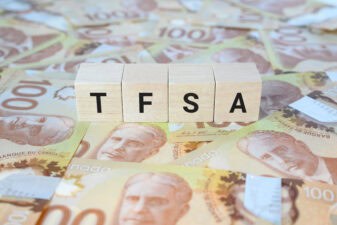Take Stock is the Motley Fool Canada’s free investing newsletter. To have future editions delivered directly to you, simply click here now.
Dear Fellow Fools,
For some time now, we’ve been hearing and reading that the Canadian housing market is in a “bubble” that is set to implode. Adding yet more publicity to this topic was a recent Financial Times article that discussed our “precarious” housing market.
In this week’s Take Stock, I’d like to touch on — again — whether the Canadian housing is indeed bubbly. But more importantly, I want to challenge you to consider a key question: Is your portfolio ready for interest rates to return to normal historical levels? (Hint: Probably not.)
A so-called normalization in interest rates may end up leading to the much-discussed housing implosion. For investors, this is a very real issue that many of the more traditional media outlets don’t seem to address.
What could go wrong?
The aforementioned Financial Times story presented a realistic picture of our “precarious” (their word) housing market by highlighting Canada’s household debt-to-disposable income ratio, which, according to Statistics Canada, currently stands at 163%. In other words, for every $1 of after-tax income we Canadians bring in, we owe $1.63.
This is a record for Canada and though I’m no economist, it can almost entirely be blamed on the historically low interest rates of the post-financial crisis order. We can likely afford to carry $1.63 of debt if the interest rate being levied is, say, 4% per year — because in that scenario, $1.63 of debt costs us just $0.065 per year, or 6.5% of every disposable dollar earned.
In a more normalized interest rate environment, where borrowing costs could be double today’s level, to be levied that same carrying charge of $0.065, you can only carry half the outstanding debt (8% of $1.63/2 = $0.065). It’s as simple as that.
Because the low-rate environment has not been accompanied by a corresponding decline in income, it has allowed Canadians (and by the way, it’s not just us!) to be able to “afford” more debt. When interest rates go back up, this relationship is going to change. Incomes are likely to remain relatively steady, but the carrying cost on all of this “affordable” debt is going to move considerably higher. That 6.5% of annual income currently being spent to carry the current debt load could very easily become 12%-13%. More of Canada’s disposable income is going to be directed to debt-servicing payments, which means a lot less cash is left over for other stuff.
Stocks to watch
Because of this rate related dynamic, when we think about our portfolios, it’s not just the exposure to the specific issue of housing that we need to consider. It’s our exposure to the entire Canadian economy.
The Banks
A good barometer of Canada’s economic climate is provided by the Canadian banks, which just so happen to also have a significant tie to our country’s housing sector. Granted, the domestic exposure that each has, as well as the exposure to housing, has shifted over the years as these businesses have evolved, but all are sure to be negatively impacted by the scenario that we’re presenting. An interest rate induced slowdown in Canadian economic activity cannot be viewed as a positive for the banks.
The big problem for bank shareholders is that this kind of scenario is not necessarily being reflected by the respective stock valuations. As illustrated below, the banks are seemingly valued for a “normalized” environment. But given the state of interest rates, this is not an accurate assessment of where we stand. These bank multiples have room to contract (and pull bank prices down with them) should our scenario of more normalized rates evolve.
| Company |
Current Price-to-Book Ratio (P/B) |
Historic Average Price-to-Book |
| Royal Bank of Canada (TSX:RY) |
2.37 |
2.36 |
| CIBC (TSX:CM) |
2.23 |
2.16 |
| Bank of Nova Scotia (TSX:BNS) |
1.98 |
2.21 |
| TD Bank (TSX:TD) |
1.93 |
2.07 |
| Bank of Montreal (TSX:BMO) |
1.71 |
1.89 |
| Average |
2.04 |
2.14 |
Source: Capital IQ
Telcos
Whereas a few of the banks will be somewhat insulated from a pullback in Canadian economic activity because of their geographic diversification, Canada’s big three telecom firms essentially derive all of their business activity from this fine country of ours.
And if and when the Canadian consumer has to stare at a sizeable bump in their annual interest expense, I can think of no better place to look for cost-cutting than that monthly bill from Bell (TSX:BCE), Rogers (TSX:RCI.B), or Telus (TSX:T). Whether it be on the wireless, Internet, or television side of the business, average revenue per customer is likely to take a hit if more dollars are required to service debt in the coming years.
Like the banks, this kind of scenario is not currently reflected by the stocks. A similar table to the one above is provided below. All three appear as though they are valued for a more robust environment than a normalization-of-rates scenario entails.
| Company |
Current P/B |
Historic Average P/B |
| BCE |
3.07 |
2.25 |
| Rogers |
5.35 |
5.15 |
| Telus |
3.20 |
2.13 |
| Average* |
3.87 |
3.18 |
Source: Capital IQ
* Editor’s Note: An earlier version indicated the Average numbers were the other way around. We apologize for the confusion.
Consumer stocks
There are two kinds of “consumer” stocks – staples and discretionary. Staples include such things as groceries and are unlikely to be as impacted by our scenario. Regardless of interest carrying costs, people need to eat.
On the other hand, consumer discretionary stocks tend to rise and fall alongside our spending patterns.
The big name that comes to mind out of this grouping of “discretionary” names is Canadian Tire (TSX:CTC.A). Fewer dollars in the pockets of the Canadian consumer means fewer for Canadian retailers – and this especially impacts those with a footprint exclusively in this country. Canadian Tire fits the bill.
And similar to its bank and telco peers, the company’s stock is not currently priced for this kind of scenario. With the stock bumping against its 52-week high, after climbing 44% this year, as the table below illustrates, Canadian Tire looks valued as though the current accommodative environment is set to continue indefinitely.
|
Current Price-to-Earnings* |
Hist. Avg. P/E |
Current P/B |
Hist. Avg. P/B |
|
15.50 |
13.69 |
1.62 |
1.60 |
Source: Capital IQ. *Last 12 months.
The Foolish Bottom Line
Unless you own real estate for investment purposes, a decline in the Canadian housing market is unlikely to have much of an impact on your day-to-day life. If one day you wake up and your home is suddenly worth $5,000 less than it was the day before, it’s not really that big of a deal (unless you’re in the process of selling your home, that is!).
A decline in housing, however, might turn out to be a symptom of a much bigger issue – the normalization of interest rates. This is a trend that you want to get in front of. Go through your portfolio and determine how exposed it is to this risk of normalization, and then ask whether this scenario is priced in. For those who own the names mentioned, in this Fool’s opinion, it’s not. They aren’t alone. There will be a better time to own this collection of interest rate-sensitive names.
Ask a Fool
We love hearing from our community of Fools and want to remind you that you can utilize our “Ask a Fool” service to put forward whatever might be on your mind. Simply e-mail us at CanadaEditorial@fool.com.
‘Til next time….happy investing and Fool on!
Sincerely,
Iain Butler
Chief Investment Advisor
Motley Fool Canada








